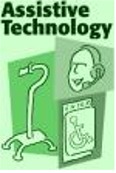 |
|
||||||||














EDUC 475/698A
|
|||||||||||||||||||||||
Assistive Technology ChallengeBy: Scott Sines, Bryan Shuy, Ron Charnis |
 |
| Instructional
Objective | Learners & Context |
Object of Game | Game
Materials | |
|
Instructional ObjectiveTo illustrate to an undergraduate course, all aged students, or families interested in A.T. the important laws, policies, and traits surrounding the Assistive Technology Field in a fun and productive manner. |
|
Learners & Context of UseCollege students aged 18-endless or parents/teachers trying to familiarize themselves and their students with current legislation and policy. Overall, this game could be applied in the general classroom, college classroom, or everyday family households. Through the question and answer race from start to finish, this game could be played more than once, as the provided question cards allow for various questions to occur, with limited repetition. As a result of this design, the more one plays, them more A.T knowledge one gains. After completing the game, the players can take their newly gained knowledge of A.T, and apply it to their everyday encounters. |
|
Object of the GameTo successfully get to the finish line firs by answering questions correctly. For players seeking advanced learning, they can go to the finish line and return to GO again, using an alternate route. |
|
Game Materials
|
|
Time RequiredVaries based on skill knowledge. On average, the game will last 30 minutes. |
|
The RulesGame Play:
|
|
Design ProcessAfter several drafts of classic traditional linear paths, we as a group finally concluded that this game would be most effective if the game board was more related to the topic of assistive technology. With this in mind, we then created the pathway resembling the abbreviation of assistive technology, AT. Having done this, it now offers its game players multiple pathways, and a more interesting game play design. Secondly, after creating the initial game objective, of a start to finish progression and game play style, more and more ideas were generated in addition to what was already agreed upon. In particular, we as a group then agreed that for a better challenging interactive game play style, more obstacles were needed. After concluding this, and through many ideas of possible barriers and obstacles, we finally agreed that chance cards allowing for the player to advance him/herself further along would ultimately allow for such improved gaming. As a result of this, and multiple trial and error ideas, the game evolved into its current state, and illustrates the various ideas we as a group created. |
|
ReferencesElectronic |
|
| College of Education University of Maryland Benjamin Building College Park, MD 20742 http://www.edtechpolicy.org dpruitt@umd.edu |
 |
Copyright
© 2004 College of Education University of Maryland, College Park http://www.education.umd.edu |

